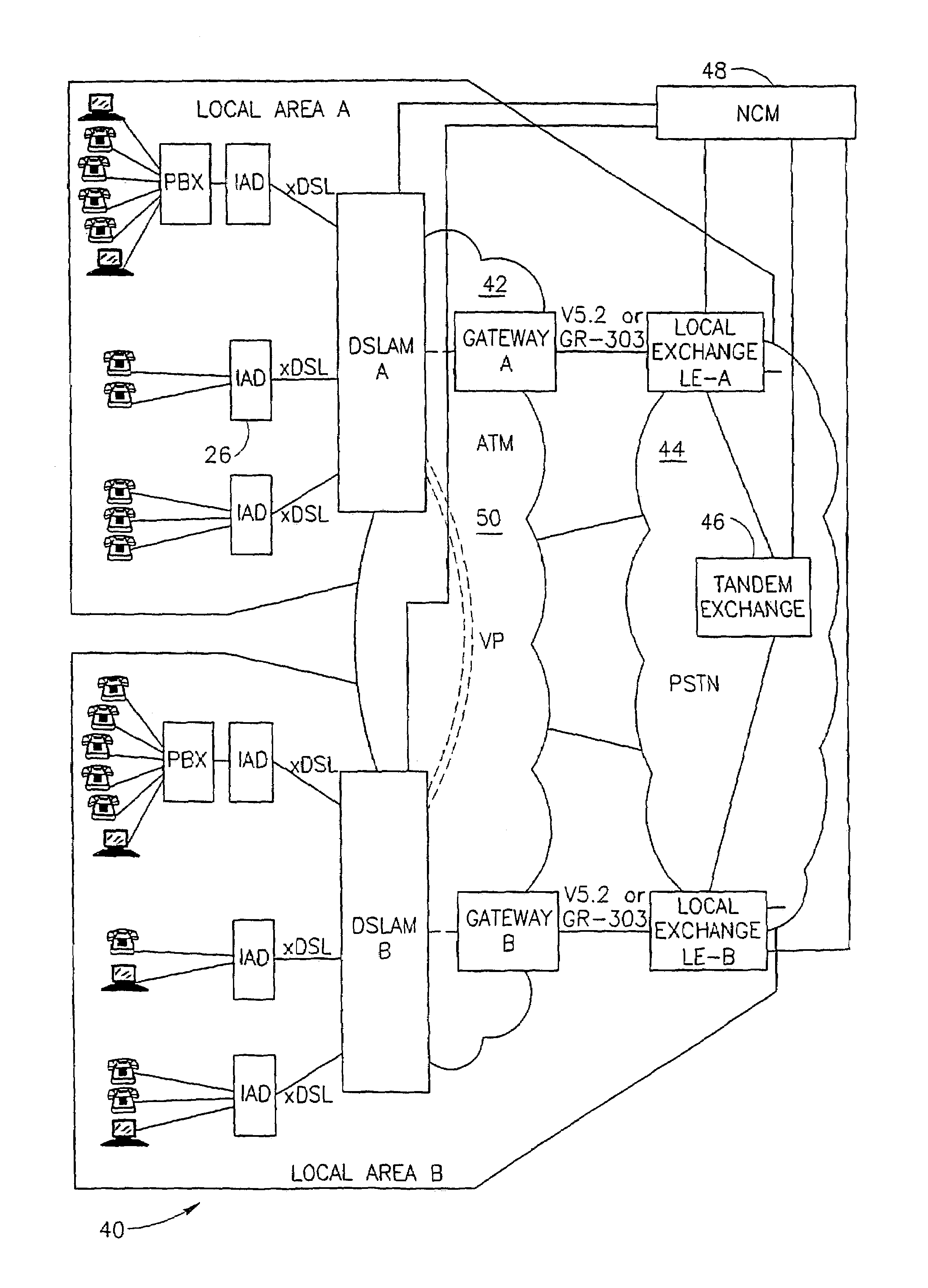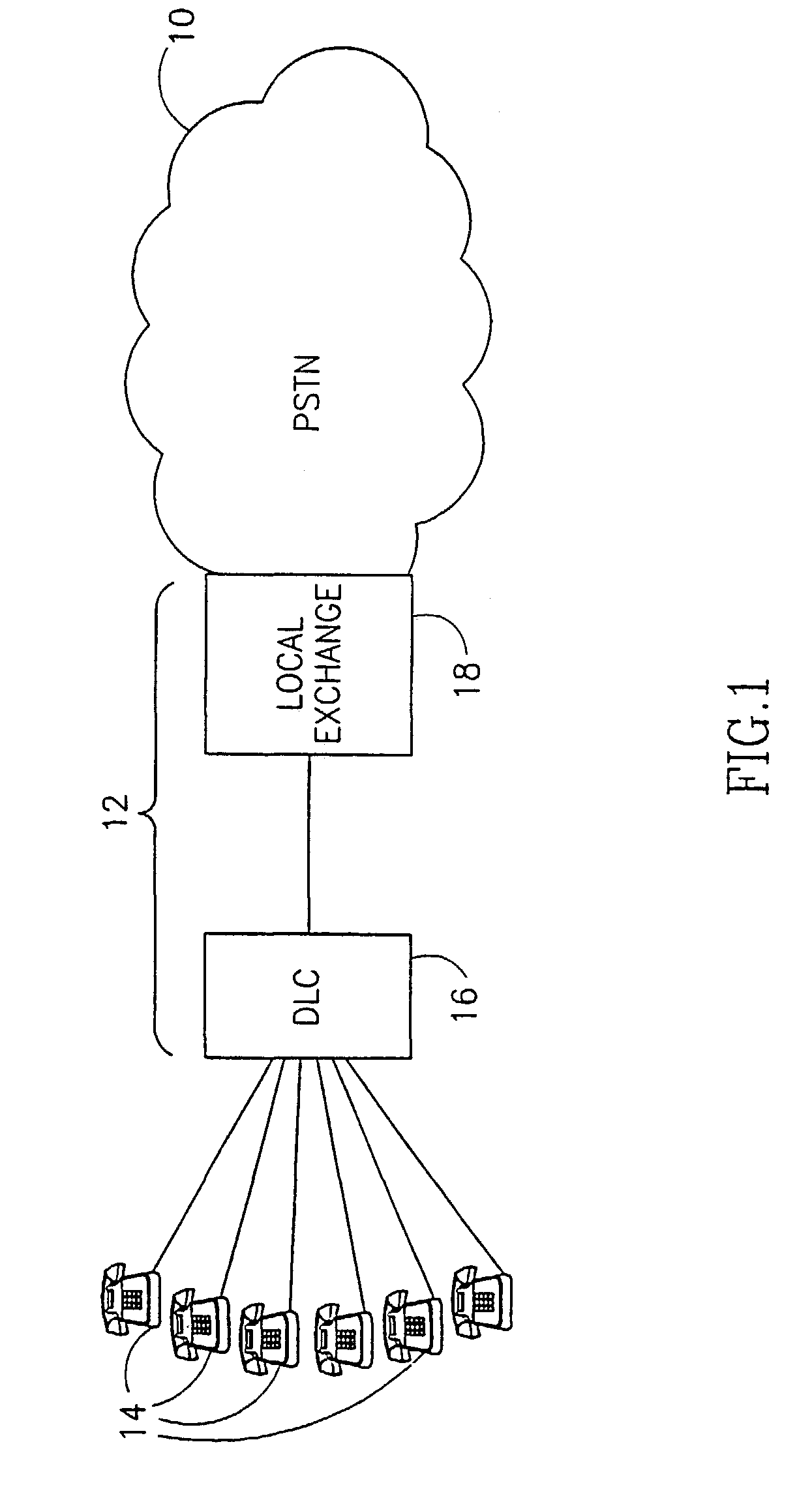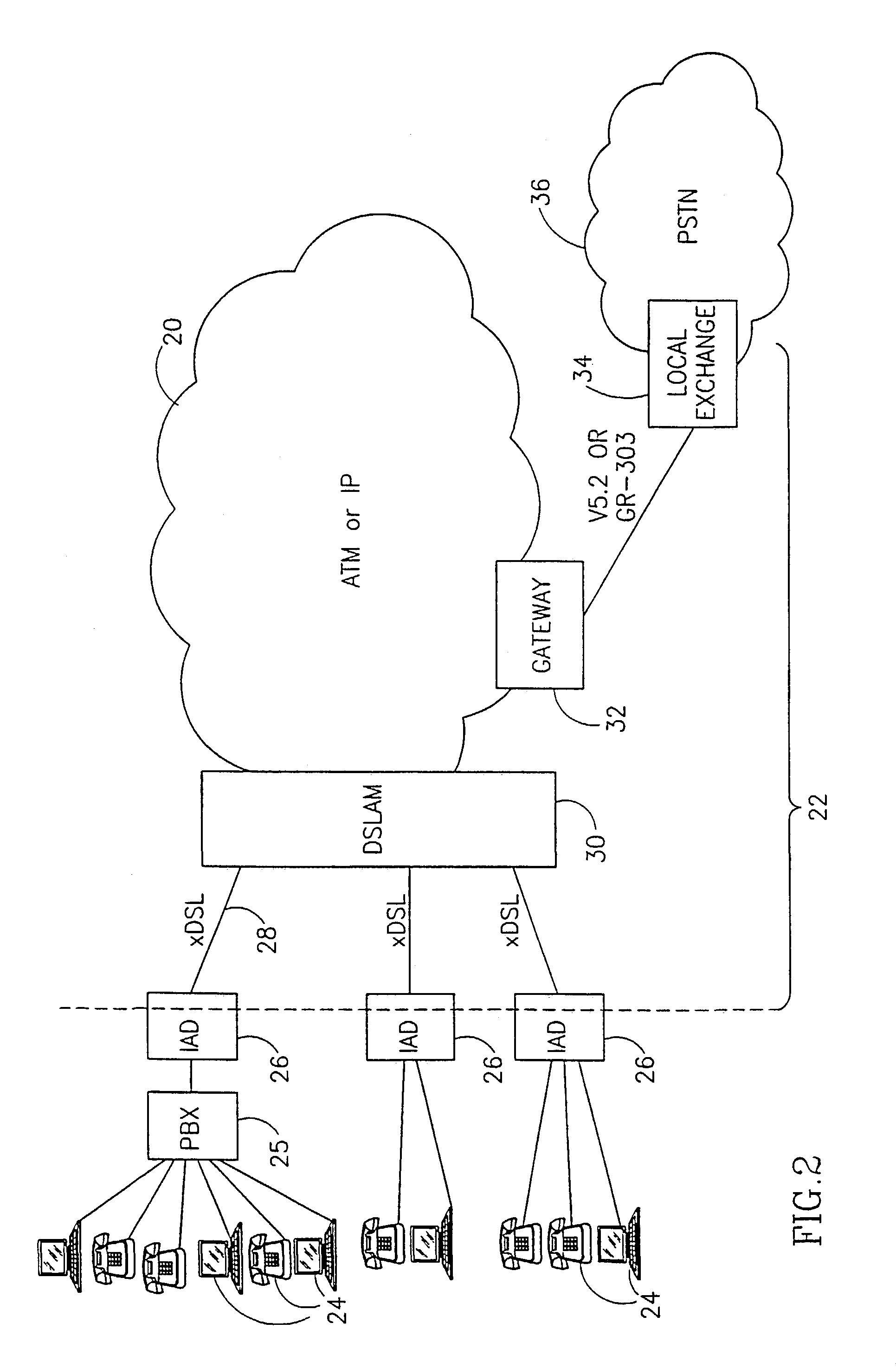Method and system for effective utilizing the switching capacity of local exchanges
- Summary
- Abstract
- Description
- Claims
- Application Information
AI Technical Summary
Benefits of technology
Problems solved by technology
Method used
Image
Examples
Embodiment Construction
[0073]FIG. 1 is a schematic illustration of a classic architecture of a public switching service telephone network (PSTN) 10 with one access network (schematically marked 12) enabling subscribers 14 to be connected to any destination via the PSTN network. The subscribers 14 are schematically shown as telephone terminal devices, but usually include telephones, fax machines, PBXs and computers via modems. The terminal devices are connected via a Digital Loop Concentrator Device 16 to a Local Exchange or Central Office (LE or LE) 18. The digital loop carrier system derives multiple channels, typically 64-Kbps voice channels, from a single four-wire distribution cable running from the central office (LE) to a remote site. The DLC 16 and LE 18 usually communicate via a standard interface like V5.2 or GR.303. In the architecture shown in FIG. 1, subscriber 14 is compelled to transmit data via the “slow” voice-grade channel available in the access network and in the PSTN. The trend of incr...
PUM
 Login to View More
Login to View More Abstract
Description
Claims
Application Information
 Login to View More
Login to View More - R&D Engineer
- R&D Manager
- IP Professional
- Industry Leading Data Capabilities
- Powerful AI technology
- Patent DNA Extraction
Browse by: Latest US Patents, China's latest patents, Technical Efficacy Thesaurus, Application Domain, Technology Topic, Popular Technical Reports.
© 2024 PatSnap. All rights reserved.Legal|Privacy policy|Modern Slavery Act Transparency Statement|Sitemap|About US| Contact US: help@patsnap.com










